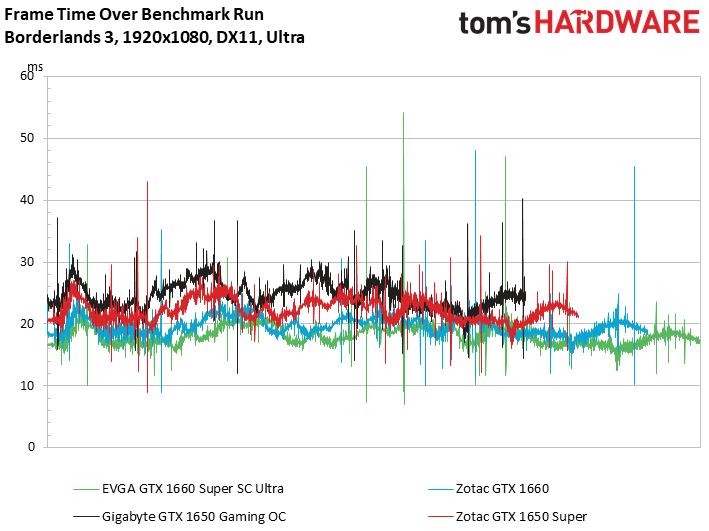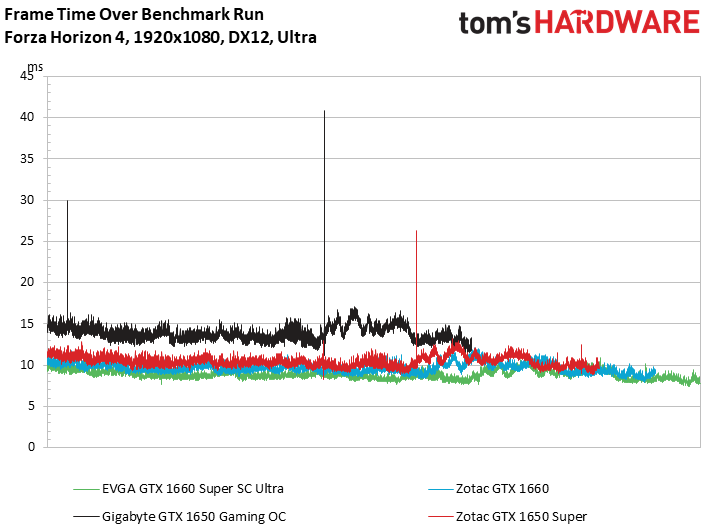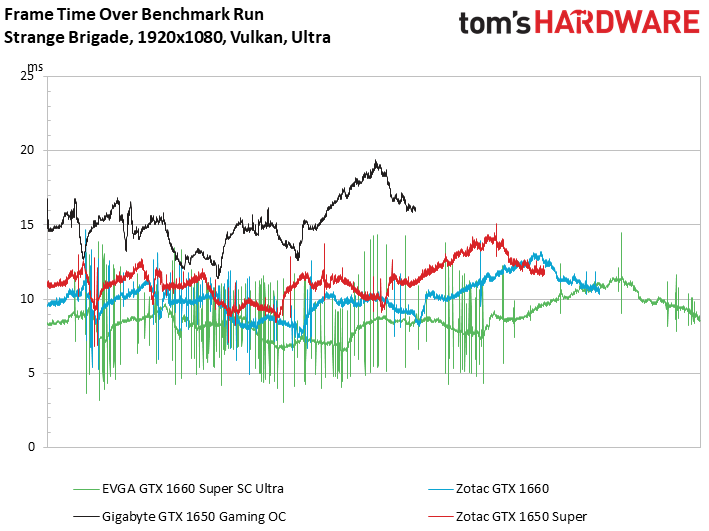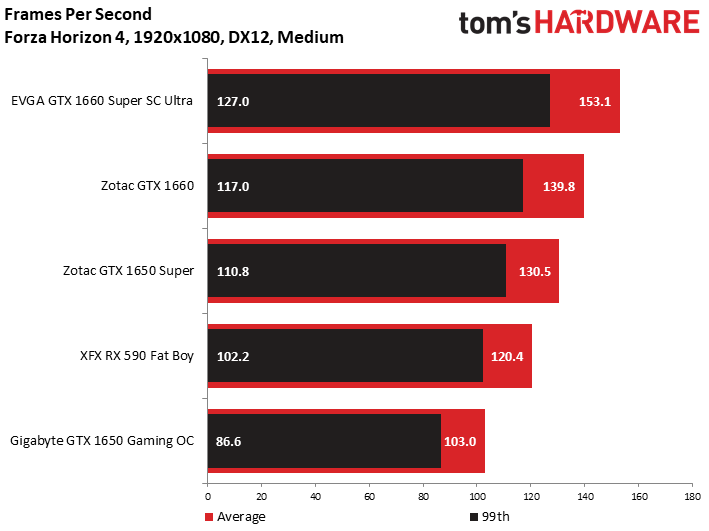Why you can trust Tom's Hardware
For this set of cards, we tested at 1080p using ultra settings as well as at medium settings. This gives us a good look at the cards working where they were intended to, while still reaching that magic 60 fps-plus metric many strive for. Jumping up to a higher resolution, even 2560x1440, uses more memory and would require turning down image quality settings even further in order to maintain reasonable frame rates.
At 1080p using ultra settings, the GTX 1650 Super’s performance ranged from 33 fps in Metro: Exodus, up to 91 fps in the Final Fantasy XIV: Shadowbringers benchmark. Borderlands and Ghost Recon Breakpoint sat under 60fps, along with Metro. The rest of the titles were higher -- either very close to 60 fps or well above.
This is a huge improvement over the $10-cheaper GTX 1650, which delivered wholly unplayable frame rates at these settings. It seems the increased CUDA cores and extra bandwidth of the GDDR6 deliver notable improvements. The Zotac 1650 Super even flirts with the XFX Radeon RX 590 Fat Boy, which generally sells for at least $40 more and uses much more power. When compared to the next card up the stack in the GTX 1660, the 1650 Super runs several percent slower than these $200-plus cards, but still much closer than the GTX 1650.
AMD’s 8GB RX 580, though not tested here, tends to run a few percent slower than the GTX 1650 Super and alsouses a lot more power. It isn’t all bad, as the AMD card is available with 8GB of VRAM, which could help down the road. But if power use and heat are a concern, stick with a Turing based card.
Division 2



Ghost Recon: Breakpoint



Borderlands 3



Gears of War



Strange Brigade



Shadow of the Tomb Raider



Far Cry 5



Metro: Exodus



Final Fantasy XIV Shadowbringers



Forza Horizon 4



Battlefield V



MORE: Best Graphics Cards
MORE: Desktop GPU Performance Hierarchy Table
MORE: All Graphics Content
Get Tom's Hardware's best news and in-depth reviews, straight to your inbox.
Current page: Performance Results: 1920 x 1080 (Ultra)
Prev Page Feature and Specifications Next Page Performance Results: 1920 x 1080 (Medium)
Joe Shields is a staff writer at Tom’s Hardware. He reviews motherboards and PC components.
-
Mileta Cekovic It would be interesting to see how Radeon RX 5500 and especially RX 5500 XT fare against RTX 1650 Super and what the prices of them will be.Reply
With RTX 1650 Super @ $160, Nvidia has given AMD a serious task to beat this price/performance level. -
King_V This, I think, has definitely put AMD on notice. A little hard to say for certain, and I wish the RX 570 4GB and RX 580 8GB results were on the charts as well, but, depending on the game, it looks like the 1650 Super is at least equal to the RX 570, and sometimes matches the RX 590.Reply
Given the $160 price point, it seems the RX 570, 580, and 590 are going to have to adjust prices downward.
Further, I'm thinking that AMD is not going to be able to get by with only matching the RX 580's performance with the RX 5500. Or, if they do, they will have to definitely undercut the 1650 Super's price, which will put even further downward pressure on the Polaris cards.
On the other hand, I don't know what to think about the RX 5500 - at one point it was stated to be a 150W card, then it was 110W. What little performance data we have, and it's precious little data, pegs it at around RX 580 performance. I'm hoping this is all a case of AMD holding their cards close to their chest, but, as it stands, that's not overly promising, given what the 1650 Super offers in performance... and AMD should worry.